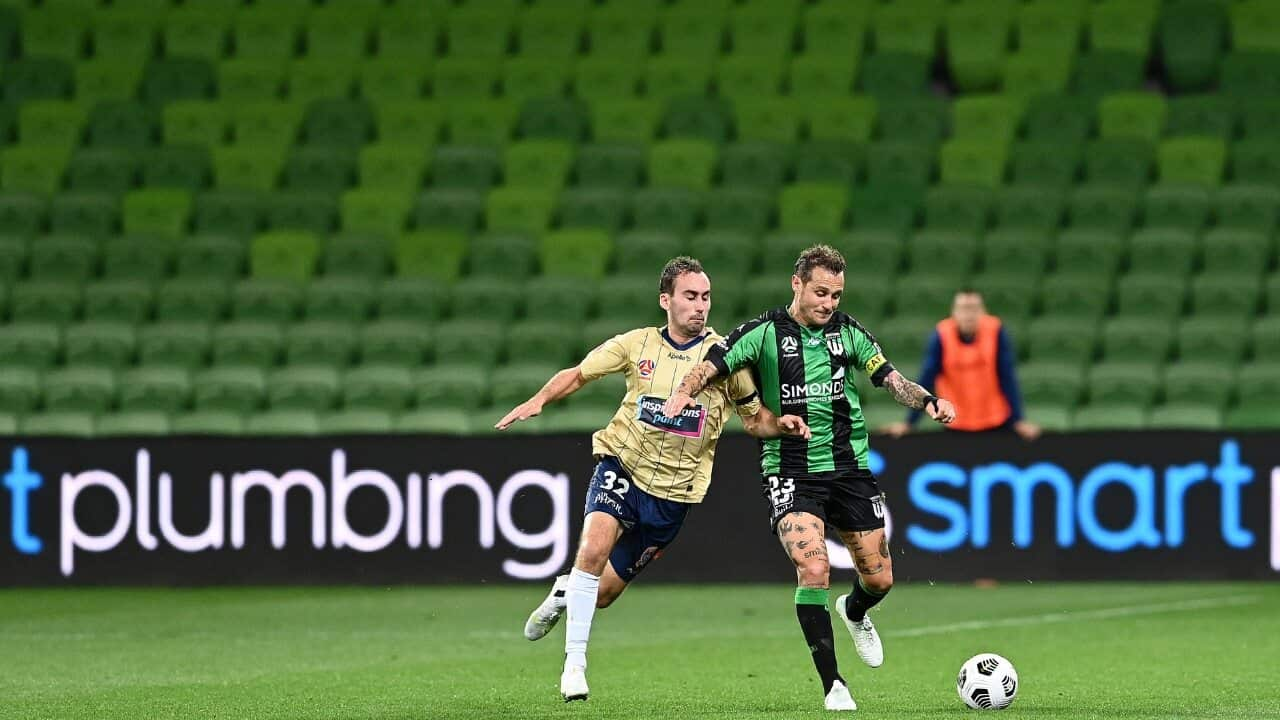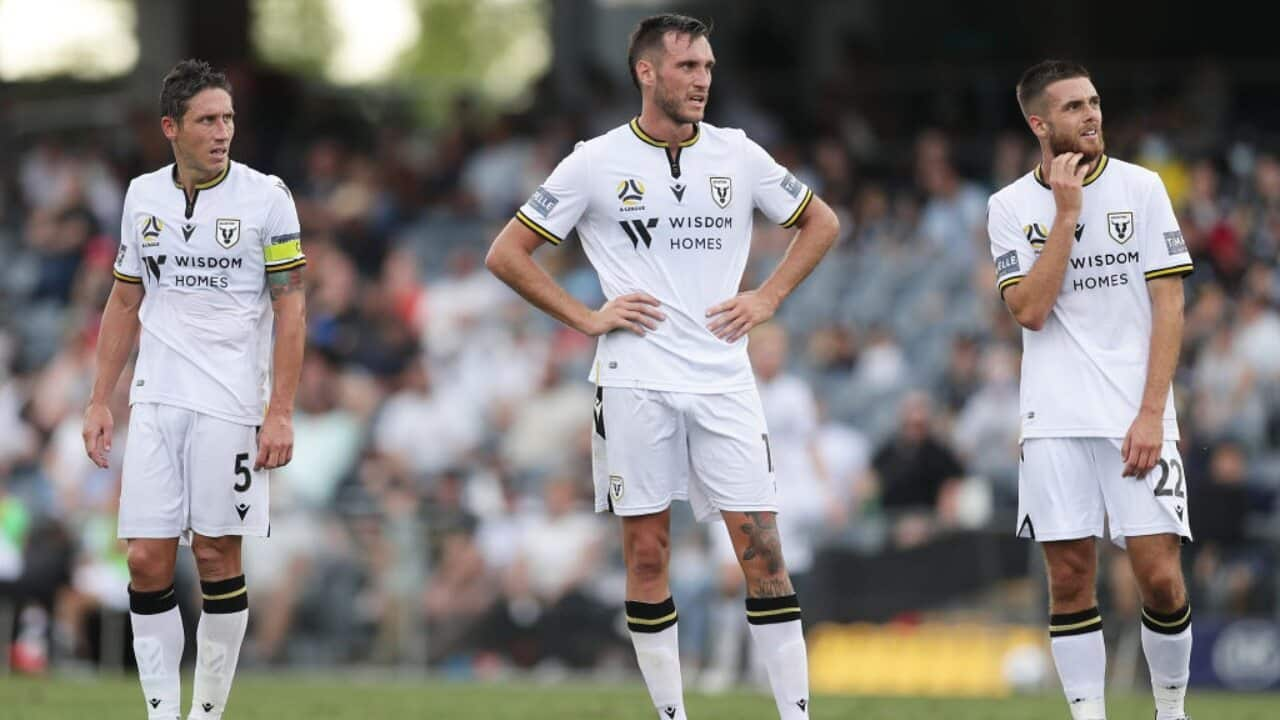The infamous SokkahTwitter was abuzz with chatter, mainstream media headlines followed and even The Project did a story on it entitled ‘A-League Beleaguered’.
Fingers were pointed at the lack of publicity, the COVID-19 pandemic, and the mistreatment of fans in 2015, all the while recognising that Australian football had reached a sad point and was desperately missing its passionate fans.
But perhaps the most shocking element, for me, wasn’t the crowd figure or the subsequent noise it generated – it was that people were surprised.
This season’s average crowd attendances have been in the 5,500 range while television ratings on Fox Sports are down by a reported 29% compared to last season, which are symptoms that extend well beyond these virus-riddled times.
In the last two seasons alone, we’ve seen two new teams introduced to the competition at a time when A-League fans were suffering from great fatigue, but it all came a little too late, with serious doubts cast over the newcomers.
Not only were neither of the clubs at the top of the list of the report commissioned by Football Federation Australia, but it left fans questioning why they were the most suitable candidates above every other bid.
This became especially obvious when documents being circulated revealed that their chief broadcaster Fox Sports had indicated that it was in favour of the Southern Expansion and Team 11 bids.
The likes of Canberra, Tasmania, Wollongong and other regions never stood a chance with an alleged part of the Fox agreement stipulating that the governing body would only receive additional funding if the competition expanded to teams in either Sydney, Melbourne, or Brisbane.
So, if you want to know why only 990 people turned up to watch a nomadic Western United take on a lowly Newcastle Jets at AAMI Park - don’t question the club, ask Football Australia Chairman Chris Nikou why the board inducted them into the competition.
Playing out of a purpose-built AFL stadium, which historically has taught us doesn’t gel well with fans, being forced to find alternative arrangements, all the while attempting to lure fans was always going to be destined for disaster.
Possessing one of the most exciting imports in the way of Alessandro Diamanti and remaining just a point outside of the top six (with a game in hand) has also done little to help their cause, and how could it?
If you don’t have place to worship in consistently every week and you’re facing a side that is bottom of the ladder on a Monday night, then you should come to expect crowd figures like this - just leave your bemusement at the door.
In defence of Western United, they have done everything within their power to spread their gospel and establish a connection with their community clubs, but it was always going to be an uphill battle with the stadium model and broad geographical catchment that had been proposed.
The unexpected intervention of the pandemic had reportedly put their stadium plans on hold but with ground expected to break this July, Western United CEO, Chris Pehlivanis told The World Game recently: “For us, we’re in here for the long game, not the short game.”
“We’re really focusing on getting the product on the field right and really focused on getting all the plans off the field right and then the fans will come.”
So, what have been the other contributing factors to the game’s current stagnation?
It truly is a little bit of everything.
The pandemic, for one, has undoubtedly contributed to a selectively restrained economic climate – families are wary of where their dollars are being spent and it doesn’t help that venue ticket prices have been a sore point for years.
Perhaps the ultimate crescendo came in the form of this season’s debutants Macarthur FC charging an eye-gouging $50 per person for Sydney FC active fans to attend Bulls matches, which club director Sam Krslovic attributed to COVID and an unanswered voicemail.
But Australian football’s problems existed well before the COVID-19 outbreak - all the shutdown period did was put our longstanding issues under the microscope.
Then there is the capitulation of one of the league’s most successful football clubs in Melbourne Victory this season, which has put a massive dent in the competition's most richly supported fanbase.
The lacklustre form of both Sydney FC and Western Sydney Wanderers have also aided and abetted that cause and it's no secret that if the big clubs and their rivals are doing well, then the fans are turning up.
But in order to get to the root of the problem, you must wind the clock back even further.
'Hatamoto gate' and the mistreatment of fans throughout the years reached its peak when Football Federation Australia failed to defend the game and its constituents after News Corp published a highly controversial article naming and shaming 198 banned fans in 2015.
Sydney radio talk show host Alan Jones despicably compared the incident to the Paris terrorist attacks and it led to fans walking out of stadiums as part of staged protests, the resignation of A-League chief Damien de Bohun and a collective feeling within the football fraternity that FFA had failed us.
But was it truly the end of crowds turning up in big numbers?
Less than a year after the original article was first published, in October 2016, the A-League’s attendance record was smashed when 61,880 fans piled into ANZ Stadium to witness Sydney FC defeat bitter rivals Western Sydney Wanderers 4-0.
It was one of the best showings in Australian football history and for that fleeting moment we were the envy of every other code in the country because no other sport has supporters quite like we do.
Fast-forward to 2021, and the most recent Sydney derby attracted a 20,000-strong crowd at Bankwest stadium, which, put into context, was the biggest in Sydney since COVID-19 hit.
So, while the scandal in 2015 was one of the greatest blights on the administration in its history, it isn’t the overarching reason why the football populous have become disenchanted.
Despite the News Corp article drama, subsequent change of stadiums and indifferent form, Melbourne Victory, Sydney FC and Western Sydney Wanderers have remained in the top five of average crowd attendance up until this season - with Victory only slipping to sixth in 2021, unsurprisingly.
Then there is the matter of big-name marquees - or lack of thereof.
When the Sydney Derby attracted that record-breaking crowd in 2016, Western Sydney’s squad boasted names like Jumpei Kusukami, Dimas Delgado and Terry Antonis who was on loan from PAOK, but the remainder of the squad were largely competition journeymen that we were all familiar with.
Similarly, the Sky Blues were fielding the likes of Serbian playmaker Milos Ninkovic, compatriot Milos Dimitrijevic, Brazilian striker Bobo plus Matt Simon and David Carney who, factually speaking, aren’t globally recognised names.
The point of all this?
Contrary to popular belief, whilst it helped having a superstar like Alessandro Del Piero and other well-known figures like Keisuke Honda, Emile Heskey, Tim Cahill and Dwight Yorke – the overall crowd attendance records haven’t depended on them.
Adding to this is the issue of broadcasting and the fact the lion’s share of the competition has been hiding behind a paywall since its inception in 2005.
For 16 years, the A-League has been forced to grow, spread its wings and attempt to infiltrate the mainstream all whilst being trapped inside a cage and unavailable to the masses.
And while paying to watch premium football competitions like the Premier League and UEFA Champions League aren’t uncommon in this digital day and age, these are products that fans will be all too happy to cough up a dollar for because they are some of the best in the world.
Elsewhere, many have rightfully chosen to castigate A-League owners, past and present, for their decisions but, for me, the overwhelming majority of the game’s woes should be attributed to those who were tasked with the responsibility of looking after it in the first place.
The governing body.
For the most part, David Gallop is answerable to a series of missteps during his tenure as FFA CEO, particularly his failure to defend football when it needed it most, but the game’s domestic erosion has been steeped into further decline since his exodus.
Foolishly, we thought that his leaving would solve most of our problems, but it didn’t; all it did was highlight that football’s issues don’t exist beyond the four walls of our dominion - the battle that needs to be won lives inside of it.
Many have been used as scapegoats but very few of the game’s actual perpetrators have faced the music, which include self-indulgent board members, autocratic member federations and gutless wonders who are all too happy to play the political game and collect a pay cheque.
Sure, there have been the obvious suspects, many of whom have been the centre of widely-discussed criticism, which include the Lowy’s, but they have been and gone and can we honestly say that we’re any better off?
If you want to change the game, you must start to unravel its very fabric – those who have weaved themselves into its divisive tapestry for decades, announced themselves as “football people” all the while driving their own agendas.
This is where our problems start and where they end.
Poor decisions, mismanagement and the wrong people placed in crucial roles have contributed to the game’s demise, not the game itself.
For now, the Australian Professional Leagues cohort have an enormous clean-up job on their hands and have inherited a product that has been subjected to periodic mistreatment by a string of false prophets all masquerading as football savants.
The fact that the relationship between the former Football Federation Australia and A-League owners was only severed at a time when the governing body had already done its damage is almost comical.
The reality is, this hasn’t gone on for just one year or two, it’s been going on for many - and with a month to go until the conclusion of the regulation A-League season it’s left many of Australian football’s invested parties wondering what’s next.
Questions like ‘when will the broadcast rights agreement be done?’ and ‘what will the futures of both the A-League and W-League look like?’. But perhaps more poignantly: ‘is there light at the end of this long and winding tunnel?’.
For those of us who like to believe in the good of the game, you could be forgiven for allowing a string of negative thoughts to infiltrate your mind when trying to answer the latter, but I implore you not to give up.
Your love for the beautiful game should always prevail in the face of adversity - after all, it’s the only professional football we have in this grand land we call home.
In terms of the broadcast rights negotiations, sources close to discussions revealed that a deal is “imminent” and is reportedly set to be “all about reach”.
Where the previous administration was overly concerned with stakeholder management, the APL have signalled that their intent is to very much “put the customer first”.
It’s also understood that an aggressive marketing campaign is set to kick-off leading up to the finals series because, lord knows, the game and its eyeballs need it.
So, whilst it’s easy to point to the surface issues within Australian football, it’s only when you start to scratch beneath the surface that you discover it’s what lies beneath that truly tells the tale.












